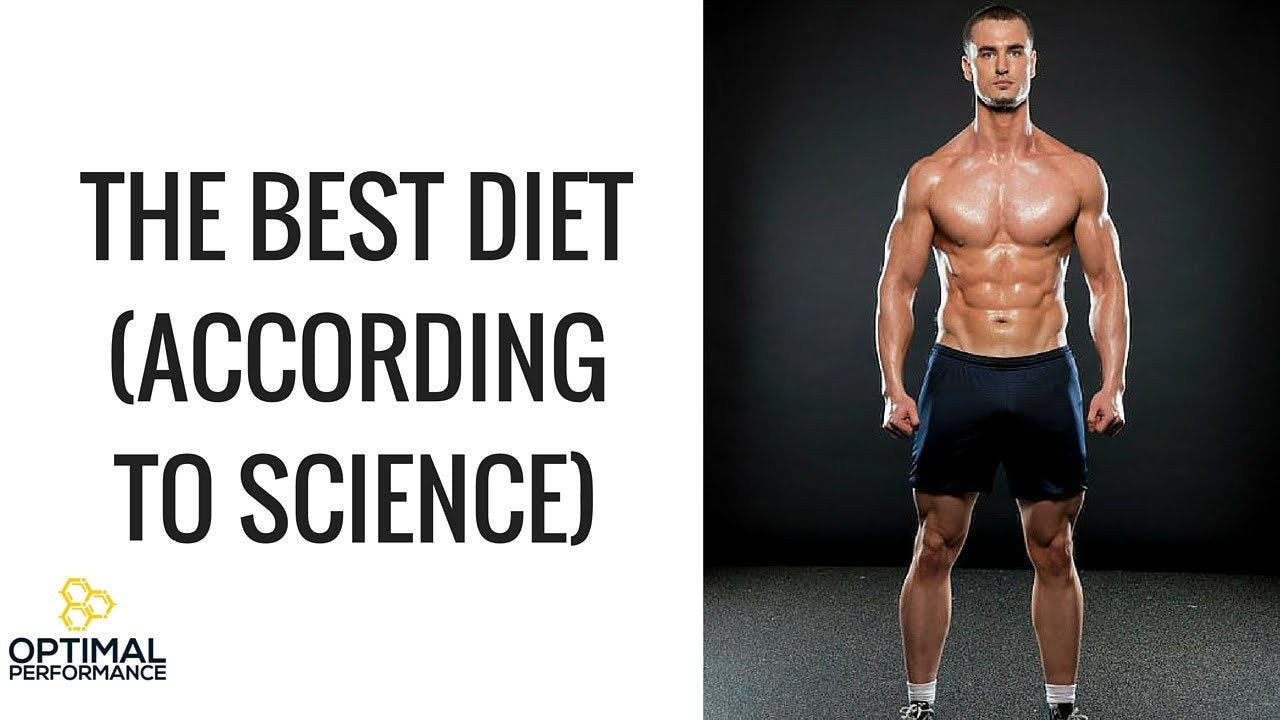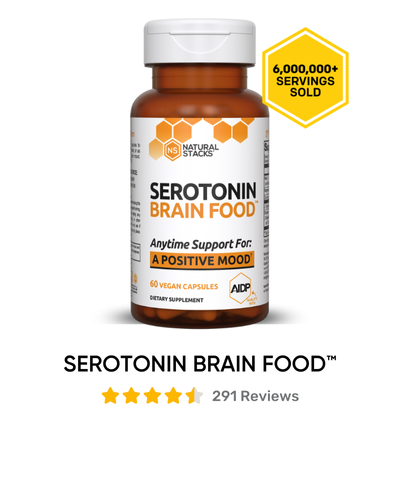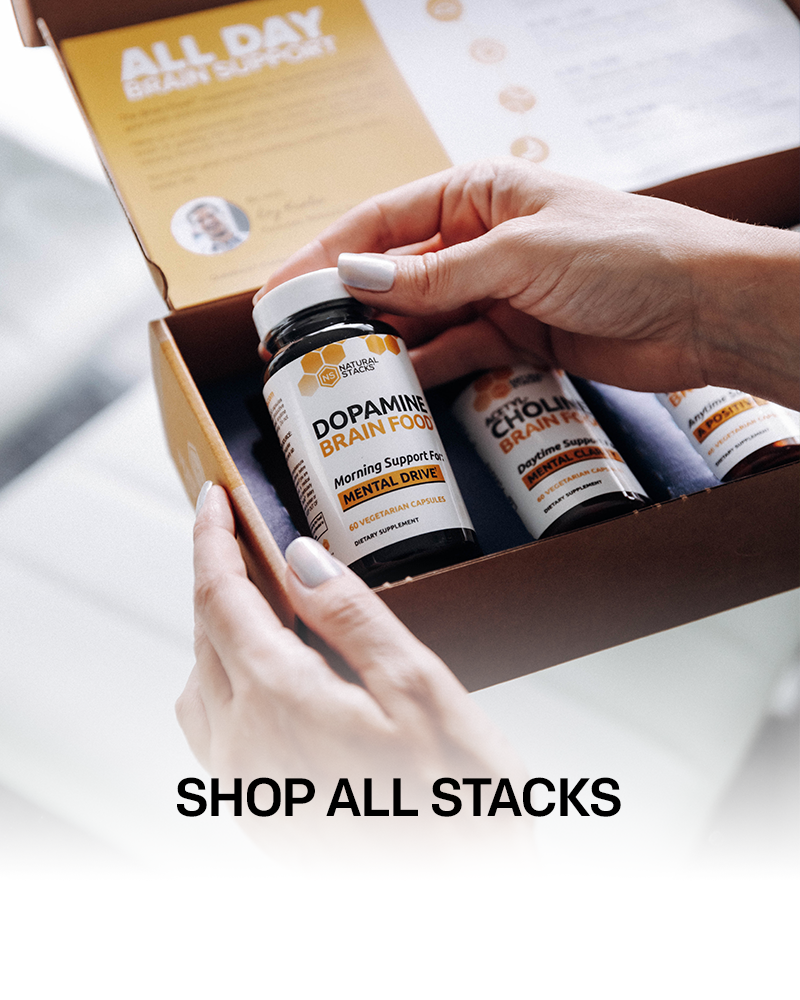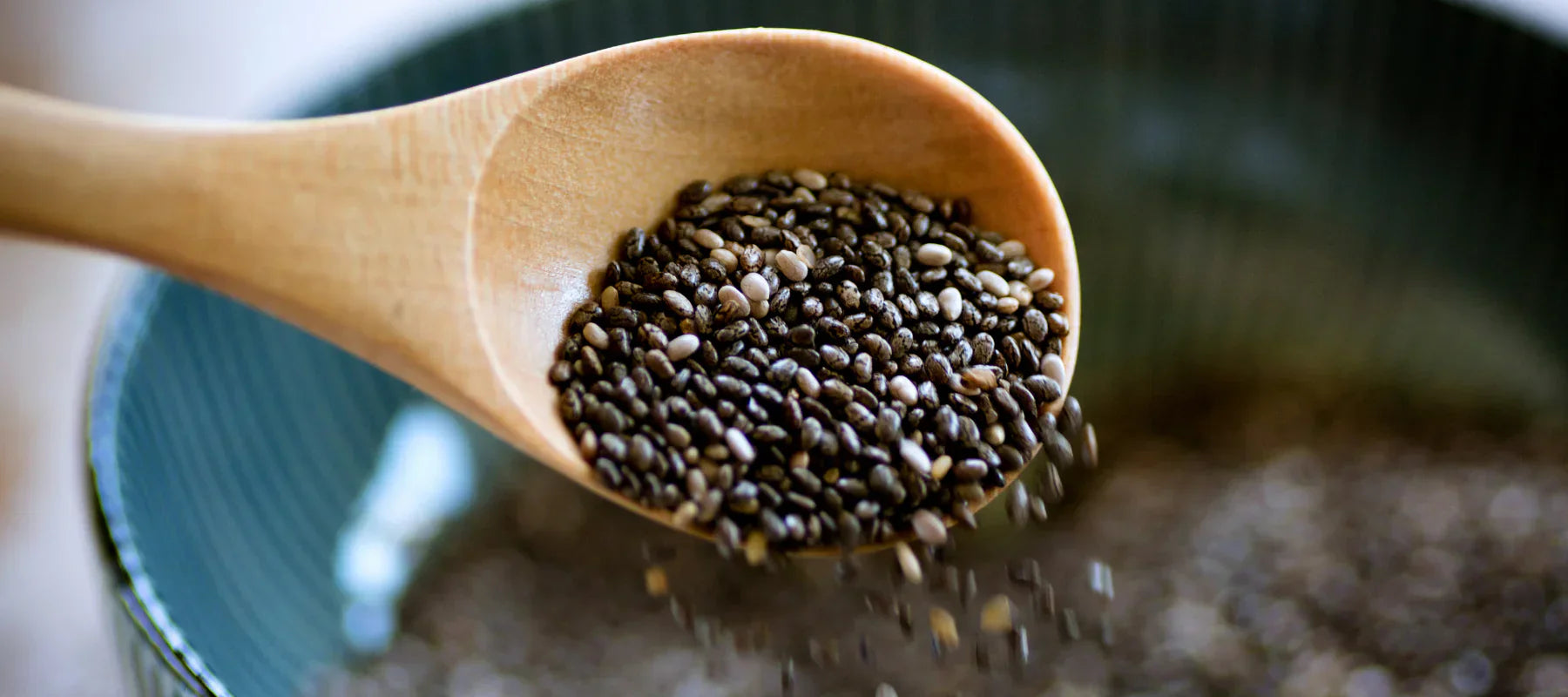The World's Best Diets with Men's Fitness Editor Sean Hyson

Sean Hyson, director of training at Men's Fitness and Muscle & Fitness joins host Ryan Munsey on Episode 001 of the Optimal Performance podcast. We discuss the truth about strength training, secrets of the most successful people he works with in the fitness world, the science behind the best diets and more.
What You'll Hear from Sean Hyson, Director of Training at Men's Fitness and Muscle & Fitness:
- Updated "COMBO PACKS" from Natural Stacks!
- What common traits do the successful people on Men's Fitness share?
- Why intrinsic motivation lasts longer than extrinsic motivation.
- Which lifts are the most effective and why you should be doing them - no matter your age or experience level.
- Science says... you need more carbs!
- Mobility for longevity.
- Sean Hyson's 3 Tips to perform at YOUR highest level.
- Review the Optimal Performance Podcast HERE for your chance to win a YEAR'S supply of CILTEP, Smart Caffeine & Dopamine Brain Food.
Links & Resources
New COMBO PACKS from Natural Stacks!
Sean's Website: seanhyson.com
Sean's Ebook: The Truth About Strength Training
Sean's Ebook: How To Get Published
Kelly Starrett Video:
The Science Behind the Worlds Best Diets with Sean Hyson
Ryan: You're listening to the Optimal Performance podcast sponsored by Natural Stacks. This is the show everybody who's into performance and bio hacking should listen to. If you want to know more about performing optimally check out www.optimalperformance.com. Happy Thursday all you optimal performers and welcome to another episode of the optimal performance podcast. I'm your host Ryan Munsey, and I've got our guest with me today, Sean Hyson. Sean, what’s up?
Sean: How you doing Ryan, thanks for having me.
Ryan: I'm doing great man thank you so much for hanging out with us today. So for all you optimal performers we’ll introduce you to Sean. Sean Hyson is the training director for Men's Fitness and Muscle in Fitness magazines, he oversees exercise and the nutrition content for both those publications. Sean’s also the author of 101 Best Workouts of all Time, he wrote The Truth about Strength Training and he is a certified strength and conditioning specialist CSCS. Sean lives in LA and is also available for online fitness and coaching. That's quite a bio, Sean! Let's have some fun with this today.
Sean: Thanks man, that makes it sound pretty cool!
Ryan: It does, it does. So I wanna get right into to that you know, like we said it's a cool bio. How did you get to where you are? You’ve got some pretty cool things right there, what are your interests and how did they help you get you where you are.
Sean: Well, I was always good at writing, I was always a writer and I really liked working out, you know, I got into fitness in college, so I was very lucky that when I got out of school I was able to combine those passions. I was like well, I like writing, I like fitness, maybe I’ll write about fitness! So I got a job at Men’s Fitness. I was an editorial assistant, I just did all the gopher jobs at the beginning and I worked my way up and surprisingly, I was the probably the only guy on the staff at the time who actually had any real passion for fitness. The rest were more professional journalists, they knew how to put it out in a magazine but they didn’t necessarily have a great knowledge or a desire to learn more about training and nutrition, but I did. So just by applying myself, I sort of took the lead in that role and educated myself along the way and got the CSCS and became a fitness editor and it sort of built up from there.
Ryan: Alright, that’s really cool. So you got your CSCS while you were working for them?
Sean: Yeah
Ryan: Okay, okay. So how did you kind of move up the ranks with them?
Sean: Well, like I said, I was one of the few guys who knew about fitness, so it kind of became natural for them to give me more and more stories right off the bat that were fitness related, you know, rather than the grooming and fashion and stuff which obviously I know nothing about. So I became the go to guy for all the core fitness content, and the interest that I expressed in it allowed me to take up more and more in that department and I started doing the interviews with the athletes and the cover guys and the fitness models and I started taking the photoshoots and I would show all the different work out moves and how they’re demonstrated, and it built up from there. I got the CSCS and just made it clear that I wanted to be involved in all things fitness, you know, that’s my passion and I learn by doing.
Ryan: Well, we are the Optimal Performance podcast so you know the whole fashion and all that grooming, that doesn't matter. But you said that you are getting to interview a lot of the people that the magazine features, so I want to dig into that a little bit more. You know, your position gives you, as you said, some inside insight and perspective on what these guys are doing. What kinda trends do you see with with the most successful guys in terms of optimizing their performance?
Sean: Well whether it's with the strength coaches I talked to or the athletes and the celebrities that i've interviewed, they all have a really positive that it all begins with attitude. They all have this this thing of like I’m going to set this little goal every day and I’m going to accomplish that little goal and that’s how you get someplace big in life without being overwhelmed by it. And it’s like as long as I hit this workout today, as long as I do this little thing to work towards self improvement then I’m gonna get there eventually. It doesn't have to be a humongous change at the time, I mean nobody loses 20lbs in a week. It's gotta be a system of consistently doing things correctly over a long period of time. So it's their attitude and their discipline. I found a lot of these guys to be really inspiring, just the way that they live. And a lot of guys who were at the top of their field, some of the highest, most respected trainers in the industry are also some of the most optimistic. They’re really generous people with their time and their knowledge, like an open book, and theyll also help anybody that comes to them and I always thought that was really good. I was really priveliged to be around guys like that, it’s really inspiring.
Ryan: Okay, okay, cool. So we’ve got be positive, discipline and be generous, I mean, those are attributes of any outstanding human being,
Sean: Yeah, and one more thing to add to that. A lot of the people I’ve interviewed are competitive, they’ve had enormous success with weightloss or they’ve had huge body transformations and they didn’t do it for anybody else. That was a misperception that I had when I first got into this, I thought yknow, if a guy like really wants to get into shape and drop a lot of fat then maybe he needs to be motivated by money or he wants to look good for some girl or he wants to impress somebody. All that extrinsic stuff doesn’t really work, it’s got to come from within, its gotta be your decision you’re making for yourself, like you want to look better, feel better just for your own benefit and that's it. You’re you not going to stay motivated to make any changes if it's to impress somebody or to shut somebody up to prove somebody wrong. That never lasts. That was a a big learning curve for me, you know it really it just has to be about yourself.
Ryan: Yeah, I'm nodding in agreement, in the years that I've owned our gym that's definitely something that I've seen and would agree with. Like you say it has to be intrinsic, you have to do it for you because those motivations are things are going to get you outta bed on the days that you may not want to if if you have some kinda superficial motivation. So, what about on the kind of bio hacking side of it? Do you see trends or commonalities between all these guys and the things they do to take their performance to the next level?
Sean: I mean I think that really the the big common thing is is the basics. They all go back to the basics, they're doing basic lifts. a lot of the most in shape people I’ve ever met, they're still doing you know, barbell lifts, some of the Olympic lifts for their variance and they’re following a diet like I guess we’ll describe soon, this moderate in all you know protein carbs and fat, and they don't go in for these the tricks and fads. Like I can remember stability ball training was a really big deal while ago and you know the TRX and all the suspension training, and it’s not that that stuff doesn’t have value, because it actually does, but it’s getting people away from the way people trainined thirty, forty, fifty, a hundred years ago, with just the basic movements, free weights, body weight, anything that they kind of modified to outsmart that is probably going to lead you down a dangerous path, so what’s old is new again, but all these guys who are at the top of their game, they seem to be doing stuff that was you know already written about and and very effective many many years ago and all the technology and the new thinking that's come out hasn't taken that much further.
Ryan: Gotcha, gotcha. So you know you kind of alluded to it there, but we definitely want to dig into some of the stuff that you write about, I mean, you are a true seeker and I think a lot of our listeners can relate to that. We're always looking for the truth, the reasons why and we're looking for the best ways to do things so that we can achieve our maximum potential. So, one of the articles that you recently wrote, you reviewed some scientific literature and found that the optimal diet based on scientific research is one that's a about two to three grams per kilogram of protein every day and 15-30 percent fat in the rest of the calories coming from carbohydrates. So a lot of our listeners are gonna be people who follow a paleo or maybe even a bullet proof diet, which is almost the exact opposite of those recommendation, somebody who's probably eating a little bit higher fat and lower carb. So, a recommendation like that's gonna come to catch some of us off guard. Can you explain some of the science behind that?
Sean: Yeah well this is just what I was saying, the diet that you just described is basically what bodybuilders like Arnold and those guys were doing fifty-something years ago and it hasn't really changed all that much because it hasn't needed to. Basically this meta-analysis guys looked at a lot of different studies and they found that you know the the commonalities among lot of amateur bodybuilders, drug free amateur bodybuilders, is that they were eating like I said 2-3 kg or about a gram to a gram and a half of protein each day, 15 to 30 percent of their calories from fats, so roughly 20 percent was the average, and the rest was from carbs. And that is just what consistently came up again and again, that’s what the guys who were successful in bodybuilding were doing when they when they didn’t have steroids, when they weren't necessarily genetic freaks, this is what most of the successful bodybuilders were doing. So I mean, that’s your answer, I mean that must be what works. That’s what’s working for most guys so why is it not going to work for you and me? And it probably seems a little jaded and outdated and ineffective compared to some of the new research and all these buzz words coming out and about how successful you know low carb diets are, but you know the proof is in the longevity of it, this is what these guys were doing many years ago, it’s what these successful guys are doing now and the reason it works is because it's not extreme, and it’s easy to sustain for one thing. You're eating a moderate amount of carbs so you don’t cut to the bone, you don't go crazy, you don’t have lulls in energy, you're able to stick with the diet longer. That’s you know, a good amount of protein, it's enough to sustain muscle mass when you’re dieting, but it's not so much that you're eating chicken breasts all day long and the fat is just enough fat to support hormone levels, but it's not so high that it's gonna keep you out of a chloric defecit because a lot of times that's a big mistake people make. They forget that when they're eating a lot of fat even though the carbs are low, that's still a lot of fat, and you know, a lot of fat means a lot of calories, so then it’s very hard to achieve a chloric defecit and thats what you need to lose fat, and no one can really argue with that. So it’s really just a diet in moderation, and the reason it works is because it's sustainable and its healthy too, its not cutting out anything completely, you’re not devoiding yourself of any nutrients. You can have potatoes, you can have vegetables, you can have fruit, andI think it just it works better for the long term.
Ryan: Yeah I think there's a couple things you said in there that the listener should pay real close attention to, I mean longevity, consistency, sustainability, you know we want something that we can do forever, not do six months at a time and then have to go do something else. The other thing I’ll add to that is you know your demographic, the folks that you deal with the most, they’re fitness people, they’re people who everybody you mentioned as as an example, people who are are lifting heavy weights anywhere from three to seven times a week and doing some type of other activity, whether it's walking your cardio of some sort on top of that weight training. And a lot of bulletproof dieters or or even some paleo dieters are not strength training that frequently so they may not need quite as many carbohydrates as that bodybuilder diet so I think as we look at diets that are out there we have to look at what our goals are, what our needs are and compare that to I'm what the literature saying and what is being presented that way. So you know if you are somebody who's following body by science where you work out once every 10 days and its extremely high intensity; I don't know if you're familiar with it, Sean, but it’s very much like the Arthur Jones and the Nautilus, hit training from back in that era, where you know it's one workout every seven to 10 days. So if that's you then you wouldn't need the same amount of carbohydrates on a daily basis as these bodybuilders. I think needs assessment and goals is a very important thing to keep in mind when we look at these approaches and and try to pick the right one for us. And the other thing that I've always told people too, is everyone's unique and individual and we need to try what works best for us. So you know if you have questions about it, then try it for yourself. Pay really close attention to how your body responds to it, and then go from there.
Sean: Yeah, Ryan, you make a great point I think that people who do best on low carb diets are generally the sedentary populations who aren’t weight training, who aren’t playing sports, and therefore just don’t need that many carbs for the sake of energy. If you’re you know an overweight housewife or executive or something and you’re really not making time for weight training then yeah, I really wouldn’t recommend eating a gram or two grams of carbs per pound of your body weight.
Ryan: So we’re talking about longevity, about consistency, and I think that’s a great fit with what we’re trying to do here at Natural Stacks and what we’re trying to do here with the product line. Every product is five ingredients or less, it’s all open source and everything is trying to be as transparent as poossible and let people see exactly what’s going into their bodies. And I think that’s why we thought that you would be such a great guest. Even your e-book, Sean, is truth about strength training so you wrote also the ‘101 Best Strength Training Workouts’, so tell us a little bit about the big compound lifts you mentioned earlier, what are some insights that you can share on the strengh training side, you know, for people who are interested in that.
Sean: Well one thing that I learned recently that was kind of a bitter pill to swallow, was that while I do believe in the the big basic lifts and the compound movements and barbell training, that powerlifting, or the power lifts, you know belter squat and dead lifts, are not necessarily for everybody. I think that everybody has to train heavy for a degree or at least for a while in their life, and everybody needs to work on increasing strength, but you don’t necessarily need to work on those three lifts. Because not everybody is built for them, not everybody has the mobility to do them safely, and they can really beat you up after a while. And I’ve learrned that the hard way, I have a partially torn labal in my left hip and my elbows are pretty beat up and whatever, you know bad shoulder, and I just think if I wasn’t so rigidly concerned with putting up big numbers in those lifts, then I would have fewer injuries and have probably just as much muscle mass, so you know, I think you’ve got to think more openly about it. If you’ve put in your time under the bar and you've mastered those lifts, then it’s time to branch out a little bit and cross train a little bit more, and you can still train brutally hard with a barbell, just instead of doing a back squat, maybe you should think about doing Bulgarian split squats, maybe put your back leg up on something and you know do a rear foot elevated split squat, do different kinds of deadlifts instead of the conventional, you know, try trapbar, try sumo stance and just change up the stance a little bit. And you know, with benching, maybe you want to go for it, if you have the option with a gym that has speciality bars then you can try something like football bar benchpress or thick bar bench presses, you know change up the grip and the angle and just do things that can save your joints, because you know once you’ve got joint problems that you’re dealing with, they never really go away. So you know, prevention is the best medicine
Ryan: Yeah, and you know, I’ll piggyback on that, you don’t have to just use the barbell to go heavy either. We use a lot of dumbell, kettle bell moves in our facility. So for people who still wanna squat we can do goblet squats, you can go heavy on those, or double kettle bell rack squats, and you know, if you can work up to your bodyweight in that then that’s ridiculous strenght and that has a lot of carryover into everything else that we do in life and as you said, Sean, you don’t have to beat your body up with the bar, and just because you are not mechanically suited to certain power moves with the bar doesn’t mean that you can’t squat, bench or dead lift with other implements. And you know, you mentioned joints and injuries and stuff, let’s get into recovery a little bit. What are some of your favourite recovery techniques?
Sean: Uh, well I think nutrition is the main thing, you have to be eating clean. And getting sleep is no joke, you know some people function on a lot less but I think minimum 7 hours for most regular people. For me, a big thing with the recent months has been mobility. I mean every single day now I take 10 or 15 minutes to just do some kind of stretching. I like a lot of Kelly Starrett videos on Youtube, there’s a mobility one and I like the contract and relax technique. You know get into an uncomfortable stretch position, contract that muscle really hard for 5 seconds, let it go for 10, just relax and do it, repeat a couple of times. Just, I think people, like they stretch, but the mistake they make is that they don’t normally have the patience for it, they don’t stretch long enough, like they’ll do 3 sets of 30 seconds of you know, a harmstring stretch and they’re done. You’ve got to really camp out in these positions for a while, to get them to open up, and the more I’ve done that the better I’ve felt and the less injuries I’ve had.
Ryan: Yeah, you know, I was at a conference down at Sorinex, Summer Strong, last weekend and a very similar statement was made about stretching, that it should actually help you feel better, it should reduce tension not increase tension after you do it. So, give us an example, you know you said contract for five seconds, relax for 10. Give us one muscle group or one area of the body that you use that on and kind of walk us through that.
Sean: Well, I know I have very tight hips so one simple thing to do is on the couch that I’m sitting on right now, I’ll put my foot up on the armrest of the couch, so it’s like I’m in a deep hipflexing position, you know my knee is up by my chest and I’ll just drive my heel into the floor and the armrest really hard and just squeeze my hamstrings and my glutes for five seconds, and then just relax it and I will sink deeper into that half squat position, and just repeat that for for a couple minutes and you’ll be amazed at how much that opens up, and that helps you get into a deeper conflection stance, you know when you’re doing a deadlift or a squat then you can just sit back on your heels farther and it really opens up your hips quite a bit.
Ryan: So, you know, just to clarify, you're standing to the side and facing the armrest when you do that?
Sean: Right, yeah, I’m standing off the side of the couch, my foot is on the the armrest and I’m facing the couch. So, it’s kind of hard to demonstrate, but my leg is kind of up in the air, it’s being supported by the armrest of the couch, and I’m just driving my heel into it to activate the hamstrings and the glutes, and then I’ll relax it and I’ll sink in deeper into that position, and then you hold out, you hold that for a while and just go deeper and deeper. The next thing that you can do is to turn your leg out to the sides, turn your knee out, and rest your shin, the side of the shin, yeah I guess the peroneal muscles, on the armrest of the couch, and just lean forward and do a piriformis stretch from there, and you know, you can just apply the same principle. Drive your leg down, then relax, and you’ll sink deeper into that stretch.
Ryan: Yeah. And this is a good point for me to note to all of our listeners that we will have show notes on the website: www.optimalperformance.com and we will grab a video of that so that you guys can see it. It'll be in the show notes so that way you don't have to try to do it yourself based on just our verbal cues here. And for this episode and all future podcasts, if you go to optimalperformance.com you’ll be able to see those show notes along with any other links to content that our guests talk about. So Sean...
Sean: Just to make it clear what that does, you’re stretching out the external rotators and the hip flexors with that move and that will really help you sit back farther in a deadlift or a squat, and will really help you do any hip rotator move more safely. So your lower back won’t be as wrapped around and your hamstrings will be looser, it works a lot of different areas, it’s really cool.
Ryan: Yeah, so I mean if you have low back pain, lower back problems, if you have a tight back then this is something that will help you loosening up your glutes, your hamstrings, all of those external rotators like Sean just mentioned. All the stuff will help with back pain so if you think you have low back pain or a tight back then definitely try this one and you'll get some experience. And if you sit all day long, even if you don't think you have back pain, then you need this one. Alright, cool. So we’ve talked about recovery, what about your preworkout or you know whether it’s a supplement or a routine that you have to make sure that when you hit the gym or any other physical performance. What kinda tricks do you employ, Sean, you know, to get the best out of what you're trying to do?
Sean: I've never been to big on pre workout supplements, I’ve tried a lot of different things. I haven't tried your products yet by your sponsor there, but you know, a cup of black coffee has always been good enough for me to get amped up and I roll out a lot, I take a PVC pipe and I roll up and down the whole body every time for about five minutes. And then, like I said, some mobility rolls and then I just kind of get into it. For me I think the first thing I do in the workout oftentimes is some kind of light machine or dumbell excercises just to pump blood into the muscles, to you know, get the joints and everything kind of loosened up and ready to go heavy. I very rarely would go in and just load up a barbell and do a heavy lift right away because I just feel like that’s too stressful. And thats a trick I learned from John Meadows, the Mountaindog guy, it’s just a good idea to start off with something that primes the pump before you get into the heavier work.
Ryan: Yeah, John’s an awesome guy. I got to work with him for about a year, year and a half so as soon as you started talking about those machines with the kind of pre pump movements then it made me think of him.
Sean: So you know exactly what I’m talking about. One thing I’ll add about that is that you kind of forget about that, you think oh is that going to wipe me out for my main lift, will I be exhausted, you know, I don’t want to get spent on my first excercise, but I’ve never found that to be the case. I can do 50 glute-ham raises before I get into the bar for a slot and you know it doesnt affect my boundaries at all. You know, it might have in the beginning but that’s just you telling you that you need you work on that area. If you’re that weak that a couple of sets of leg curls are wearing you out then you know, you’ve got bigger problems.
Ryan: Yeah and and the thing I'll again add to that is you know, you may see a decrease in that main movement for the first week or two but after three or four weeks it goes up and even exceeds what you were doing before that, and you know if you can create a body that can withstand more volume and more of that workload and then still perform at a higher output afterwards then you have done exactly what we're trying to do in the weight room and that is build yourself into something bigger and better.
Sean: Yeah, you know, it’s a matter of taking one step back to take two steps forward.
Ryan: Alright, well lets move on from that, shift gears just a little bit. I wanna know, you mentioned earlier that you have always been a writer. Can you walk us through your creative process a little bit? You know if you decide hey, I wanna write an article, do you sit down and say I’m going to write about this, or is it just kind of an idea that hits you and you, you’re like, oh man I’ve gotta find paper and write this down, how does it go for you?
Sean: Well, I actually wrote a book about this. I wrote an e-book about this process, called ‘How to Get Published’, you can pick it up at www.writingforfitness.com. John Romaniello and Lou Schuler and I worked on this together. Yeah, I mean with the fitness magazines it’s such a formula, that's the thing that people out there who wanna freelance, to write for fitness magazines have to realise. Ok so there is going to be maybe a 200 word intro to the story, and then we’re going to have these bullet point tips on whatever topic we’re addressing; these are our three serviceable information tips, and then a quick conclusion and then you’re outta there. Maybe some excercise descriptions and thats it. It’s really short and sweet. You know, at this point, I can crank through them pretty fast, but sometimes I’m just looking for that one idea, that one joke, that just gets me off running. I need one sentence, one idea for a story that just gets me off on the whole thing. So I think yesterday I was writing you know, about how a push pull split is better for some people than a classic body part split. And my intro was something like, we know how you love your classic body part split like you loved Mr Fuzzy Wuzzy your teddy bear when you were a kid, but you know its starting to look silly and embarrassing. So you know I kind of set off on a metaphor from that and explained why this idea is better than that idea and it kind of ties in at the end with some kind of kicker joke. And that’s kind of the process of writing for Men’s Health or Men’s Fitness and you know, once I find I get that metaphor down, and whatever that main idea is that I want to express and you know, the joke that’s going to make it more palatable to a mainstream audience and not so dry and technical, once thats achieved then I’m pretty much up and running.
Ryan: Is there a time of day where you feel most creative? Mornings, evenings, coffee, any particular supplements, anything that really gets you flowing?
Sean: Yeah I think you know most people you'll talk to in this industry and I think Tim Ferriss wrote about this in the four hour work week, where you know, first thing in morning, that’s when you’re at your sharpest, when you just get up after a decent night's sleep, and maybe a coffee and then do the most important thing that you have to do that day. You have to prioritise, you know, get it done right away. Don't check email first thing in the morning, try to get whatever you wanna say or get written out right away and then then you can get back to emails and all the other distractions. But you know, especially when you work in an office, like I did for many years, when you get there people are always trying to get your attention, they're interrupting you when you’re in the zone. Whatever you’ve got to get done, that's the most important thing and do it first before you know, the Wolfpack really descends on you, when they start to really compete for your attention.
Ryan: Yeah, I think that's a really great point. I kinda found this out by accident through owning the gym and having to be up at four in the morning to some teach boot camps a couple of days a week at 5 and 6am. I don't have time to check my email in the morning so I'm actually able to start the day with whatever intent I want to bring to that day and to that session and then from there I can carry that right into you know, we’re done, its 7am and I can sit down in the quiet and start writing. But you know, you mentioned don’t check email, don't check facebook first thing. So many people roll outta bed, I mean we we probably all use our alarms on our phones, so you wake up and your phones in your hand and you're looking at email, you’re looking at Facebook and you're already kinda pulled away from you, your intent and what you wanna do so I think that’s a great point, I really like that.
Sean: Well, I think that it’s natural to just as human beings, we want to feel connected. The first thing in the morning you know, most people they pull open their shades they look out on the street, or they kiss whoever they’re with hello in the morning and you want to immediately start interracting with people, it’s what helps you feel connected and helps you wake up. But you know if you’re a writer, then it’s not really the best thing. You know even if it’s copy, if it’s stories, if it’s journalism, it’s kind of by nature like a solitary thing. You talk to other people about information, but when it comes down to information in the written form then it’s a very internal and kind of a lonely process. So I find it’s better to get in the zone, to get focused, to get it done, and then I can interact with people after the fact.
Ryan: Yeah, actually, I have to agree with that. I think it’s a very important thing. So you know, you mentioned that coffee helps, and we are definitely going to send you some Ciltec, some and some dopamine brain food because I think if you give those a shot that you will see a little bit of an easier flow. And we look forward to geting your feedback on those.
Sean: About time, I’m ready!
Ryan: Yeah, you’re going to love these things. So, one more thing before we wrap this up, Sean. Give us your three best tips to perform at the highest level.
Sean: Oh man, um, well I guess on on the spiritual side of things, like I said at the beginning, setting smaller goals every day. Everybody wants to do great things in life and the more you think about how you’re going to get from point A to point Z, it just seems like theres a million obstacles inbetween and then you get off track and you just get nowhere. So whether you have any idea how you’re going to achieve something or not, just ask yourself what’s the simplest thing that I can do today to get toward that point, you know, if you wanna be ripped, then what could I do today that’s going to get me ripped? Well, I could hire a trainer, I could clear out all the crappy food from my kitchen, I could you know, pick a diet, just one simple thing. And then tomorrow the next step is like, well I could start preparing my meals for the week, or I could write out what I want my workouts to be, or I could you know, figure out what my macros are. And just little by little you can ultimately get there. You dont have to know how you’re goiing to get there, but you have to know how to begin. And I mean, the beginning steps are always the easiest, that anybody with no education in any of this stuff at all can figure out for himself. And again, I would say, don’t ignore mobility. I think that’s hugely important, everyone likes to just crack their knuckles and pick up a barbell, but you know you can maybe do that in your twenties but as you get a little bit older, you know you pay for it. And those little aches and pains that you thought would just go away, or that used to go away quickly, they start to hang around a lot longer and sometimes permanently and it’s just not worth it. So don’t think that it makes you look stupid in the gym, you’ve got to take the time to get into those uncomfortable positions and stretch out, and you know, prepare for lifting. And then, on the nutrition side, I think people have to be more aware of the power of the stir fry. I am a huge fan of stir fries, if you want a really simple way to get a lot of good food in you quickly in one one-shot like a one-pot meal, the stir-fries the way to go. You don’t even have to use oil, just put a little water in the bottom of a wok or a pan, cook up your fish and your chicken and some sort of protein and you chop it up, throw it in there with some vegetables, and serve it over a bed of rice and you’re done. And it’s delicious, you serve it with soy sauce, you throw in some garlic chili sauce like you can find in the Asian foods section of your foodstore, and it’s just fantastic. And you can cook those in bulk, you can have them for a whole week, and I make use of that a lot. It really gets all your clean carbs, your vegetables and your protein in one place.
Ryan: Man, I'm hungry right now just listening to that. Um, well those are some awesome tips, thank you Sean. So, all our listeners, you can get more of Sean at www.seanhyson.com and check out the truth about strength training there. And Sean, you said you’re getting ready to redo the website?
Sean: Yeah, my website’s going to be overhauled, it’s going to come back with a new fresher look and there’s going to be more information about my online coaching program on there and more about the ‘Truth about Strength Training’ book. And incidentally, all the nutritional stuff we were talking about before, with the bodybuilders and how all the studies showed that was the optimal diet, well that just happens to be pretty much the same diet that is prescribed in my strength training book. I didn’t actually know about the study when I was writing the book, I just wrote that book based on stuff that I had read and learned over the years and I was very happy to see that that big meta-analysis came out that pretty much corroborated it all.
Ryan: So, some validation for all the stuff that you read and studied before you wrote that.
Sean: Yeah, that was actually like kind of a big sigh of relief! When I read the study it was like oh great, I do know what I’m talking about!
Ryan: Awesome, so thanks a lot for your time today, Sean. And you know, we look forward to seeing more from you and hearing about all your successes.
Sean: Thanks, Ryan. And just to say it again, it’s www.seanhyson.com.
Ryan: Yeah definitely, and we will have that link in the show notes for all our optimal performers to check you out.
Sean: Awesome man, I’ve appreciated talking to you.
Ryan: You've been listening to Optimal Performance podcast, remember you can find show notes for every episode along with video versions at www.optimalperformance.com. And remember that Optimal Performance podcast loves your 5* ratings, so head on over to iTunes, show us some 5* love and not only will we read those reviews on the show, but you will be entered into a raffle to win some free Natural Stacks goodies. See you next Thursday.













